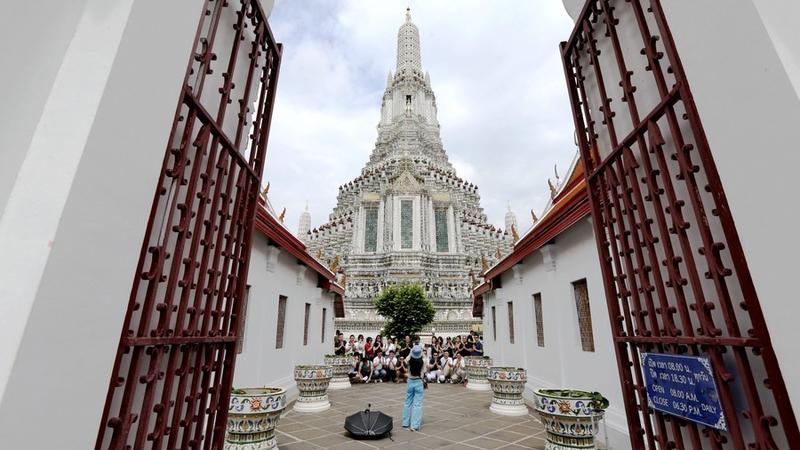 Tourists take photos at the Wat Arun in Bangkok, Thailand, on June 16, 2023. (PHOTO / XINHUA)
Tourists take photos at the Wat Arun in Bangkok, Thailand, on June 16, 2023. (PHOTO / XINHUA)
Thailand’s tourism industry is looking up. With consumer spending during this year’s traditional Loy Krathong festival expected to hit an eight-year high, the country’s tourism authority has announced its aim to attract more than 8 million Chinese tourists next year.
At a press conference on Nov 28, the Tourism Authority of Thailand (TAT) said that it would continue to promote the country as one of the world’s most popular travel destinations, and aims to attract more foreign tourists, especially from China.
Although Thailand faces intense competition from other countries which have also offered visa exemptions to Chinese travelers, Thapanee said that his country is still among the top destinations that tourists from the Chinese mainland want to visit
TAT Governor, Thapanee Kiatphaibool, revealed that the authority is confident that total foreign arrivals this year will exceed its target of 25 million people.
READ MORE: Chinese tech firms, influencers help boost Thai tourism
Although the TAT had lowered its expectations of Chinese tourist arrivals from the previous five to seven million to about 3.4 million this year, the authority estimated that Chinese arrivals next year will increase to more than eight million due to an increase in the number of flights and better economic conditions.
“Thailand is well-known for its diversified tourism experiences and great services. And we will strengthen efforts to ensure the safety of tourists to further attract foreign visitors, especially from China,” Thapanee said, adding that Chinese tourists may help to generate 452 billion baht ($13 billion) in tourist receipts next year.
For the past few days, people all over Thailand had been taking part in the Loy Krathong festival to celebrate the full moon. Local residents and tourists gathered in the evening at lakes, rivers, canals, and beaches to pay their respects to the river goddess by floating krathong, banana leaf “rafts” decorated with flowers, incense and candles.
Spending for this year’s festival is estimated to increase by 3.3 percent from the previous year to 10 billion baht, according to a survey by the University of the Thai Chamber of Commerce.
Although Thailand faces intense competition from other countries which have also offered visa exemptions to Chinese travelers, Thapanee said that his country is still among the top destinations that tourists from the Chinese mainland want to visit.
China was Thailand’s biggest source of international visitors before the Covid-19 pandemic, accounting for nearly 11 million arrivals in 2019, according to official statistics.
This year, however, Malaysians contributed the most to total foreign arrivals at 3.66 million people, followed by Chinese (3.03 million), South Koreans (1.43 million), Indians (1.4 million) and Russians (1.24 million).
In a bid to attract more visitors, the Thai government announced a temporary visa exemption for 30-day stays for Chinese and Kazakh nationals, which started on Sept 25 and is scheduled to expire on Feb 29 next year.
Chattan Kunjara Na Ayudhya, TAT’s deputy governor for international marketing in Asia and South Pacific, said in a recent interview with the Bangkok Post that the authority is planning a media trip to invite more than 100 Chinese key opinion leaders to explore new activities and destinations in Thailand, along with testing safety measures for tourists.
READ MORE: Thai tourism beats 2022 target with 11.15m foreign arrivals
During his visit to Beijing in October, Thai Prime Minister Srettha Thavisin had proposed making visa-free entry for Chinese tourists permanent. But no final official decision has been announced yet.
Contact the writer at yangwanli@chinadaily.com.cn


